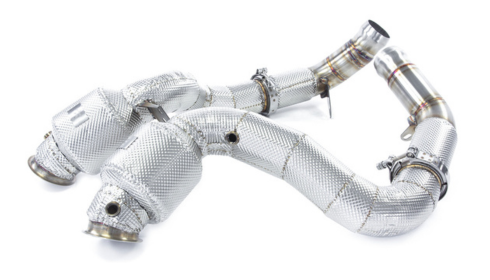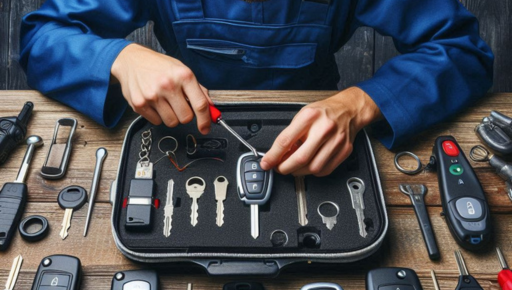The Mercedes AMG GT63 is already a high-performance marvel, offering an unmatched combination of power, luxury, and cutting-edge technology. However, for car enthusiasts who crave more raw performance and enhanced exhaust sound, installing an aftermarket downpipe is one of the most effective upgrades. In this guide, we’ll take you through everything you need to know about the mercedes amg gt63 downpipe install, including the benefits, installation steps, and tuning considerations.
What Is a Downpipe?
A downpipe is part of your vehicle’s exhaust system. It connects the turbocharger to the rest of the exhaust and plays a crucial role in directing exhaust gases away from the engine. In factory setups, downpipes often come with catalytic converters and other components designed to meet emissions standards. While this is great for environmental compliance, it can restrict airflow and reduce turbo efficiency.
Performance downpipes, on the other hand, usually have high-flow or catless designs. This modification significantly improves airflow, which in turn boosts horsepower and torque while offering a throatier, more aggressive exhaust note.
Why Upgrade the Downpipe on Your AMG GT63?
Upgrading the downpipe on your Mercedes AMG GT63 can bring numerous benefits:
- Increased Horsepower and Torque: A high-flow downpipe reduces backpressure, allowing your engine to breathe better. This can result in power gains of 30–60 horsepower, especially when paired with a proper ECU tune.
- Enhanced Turbo Response: With improved exhaust flow, turbo lag is reduced, making throttle response quicker and more engaging.
- Improved Exhaust Sound: The exhaust note becomes deeper and louder, adding an aggressive touch that many AMG owners love.
- Better Heat Management: Many aftermarket downpipes come with thermal coatings or heat shielding to manage engine bay temperatures more effectively.
Key Considerations Before Installing
Before you begin the installation process, consider the following:
- Tuning Requirements: Installing a performance downpipe may trigger a check engine light due to changes in emissions. Most owners opt for an ECU tune post-installation to recalibrate sensors and optimize performance.
- Warranty and Emissions: Modifying your downpipe may void your manufacturer’s warranty and affect emissions compliance in certain regions. Always check local regulations before proceeding.
- Quality of Parts: Choose a reputable brand with stainless steel or ceramic-coated options for durability and performance.
Mercedes AMG GT63 Downpipe Install Process
If you’re mechanically inclined or working with a professional installer, here’s a high-level overview of the downpipe installation process:
- Raise the Vehicle: Safely lift the vehicle using a hydraulic lift or jack stands and ensure stability before starting.
- Remove Underbody Panels: Gain access to the exhaust components by removing the underbody shields and covers.
- Detach OEM Downpipe: Disconnect the sensors (O2 sensors) and unbolt the factory downpipe from the turbo and mid-pipe.
- Install Aftermarket Downpipe: Fit the new performance downpipe in place, reconnect all sensors, and secure it with proper fasteners.
- Check for Leaks and Errors: Start the engine, check for exhaust leaks, and ensure no fault codes appear. If needed, proceed with ECU tuning to prevent issues.
Tuning After Downpipe Install
To fully unlock the benefits of a downpipe install, pairing it with a performance ECU tune is highly recommended. A proper tune can:
- Optimize air-fuel ratios
- Disable fault codes or CELs (check engine lights)
- Extract maximum horsepower and torque gains
- Improve throttle response and driving dynamics
When selecting a tuning solution, opt for providers that specialize in Mercedes AMG tuning to ensure safe and reliable results.
Final Thoughts
A Mercedes AMG GT63 downpipe install is one of the best performance upgrades for enthusiasts seeking more power and a racier exhaust tone. Not only does it transform the driving experience, but it also enhances the character of an already exhilarating car. Whether you’re preparing for track days or just want a more thrilling daily drive, upgrading your downpipe is a move you won’t regret.




